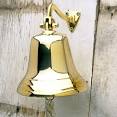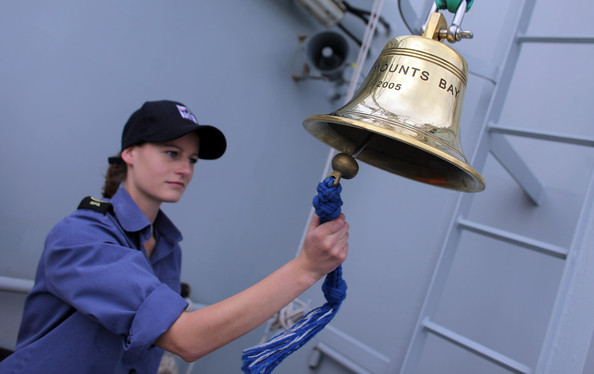Watch Schedules and Ship's Bells
I was recently asked a question concerning why ships sounds bells and what they signify.

So here we go………
As early as the 15th Century, a bell was used to sound the time onboard a ship. (Time, in those days, was kept with an hourglass.
The bell was rung every half hour of the 4 hour watch. A 24 hour day was divided into six 4 hour watches, except the dog watch (16:00 - 20:00 hours) which could be divided into two 2 hour watches to allow for the taking of the evening meal.
|
Middle Watch
|
Midnight to 4 AM (0000 - 0400)
|
|
Morning Watch
|
4 AM to 8 AM (0400 - 0800)
|
|
Forenoon Watch
|
8 AM to Noon (0800 - 1200)
|
|
Afternoon Watch
|
Noon to 4 PM (1200 - 1600)
|
|
First Dog Watch
|
4 PM to 6 PM (1600 - 1800)
|
|
Second Dog Watch
|
6 PM to 8 PM (1800 - 2000)
|
|
First Watch
|
8 PM to Midnight (2000 - 0000)
|
The bells were struck for every half-hour of each watch, with a maximum of eight bells. For instance, during the Middle Watch you would hear the the following:
00:30 1 bell
01:00 2 bells
01:30 2 bells, pause, 1 bell
02:00 2 bells, pause, 2 bells
02:30 2 bells, pause, 2 bells, pause, 1 bell
03:00 2 bells, pause, 2 bells, pause, 2 bells
03:30 2 bells, pause, 2 bells, pause, 2 bells, pause, 1 bell
04:00 2 bells, pause, 2 bells, pause, 2 bells, pause, 2 bells
At eight bells your watch was over! All other 4 hour watches followed this same procedure except the Dog Watches.
At the end of the First Dog Watch, only four bells were struck, and the Second Dog Watch bells were struck like this: 6:30 PM, one bell; 7 PM two bells; 7:30 PM, three bells; and at 8 PM, eight bells.
